About Stegosaurus
| Scientific Name (Genus) | Stegosaurus |
| Meaning of Name |
Roofed lizard
stegos (roof) [Greek] - saurus (lizard) [Greek] |
| Classification | Ornithischia, Thyreophora (Thyreophoroidea, Stegosauria) |
| Total Length | Approx. 7m |
| Diet | Herbivorous |
| Period | Late Jurassic |
| Sub-classification/Species |
Stegosaurus stenops
(type species)
*Although many species were once described, the prevailing theory is that only Stegosaurus stenops is currently considered valid. |
| Year of Paper Publication | 1887 |
| Publication |
A new order of extinct Reptilia (Stegosauria) from the Jurassic of the Rocky Mountains.
American Journal of Science (Series 3 Vol. 14), by Marsh, Dec, 1887. |
Features
The most distinctive features of Stegosaurus are the "bony plates lined up on its back" and the "four spikes at the end of its tail."
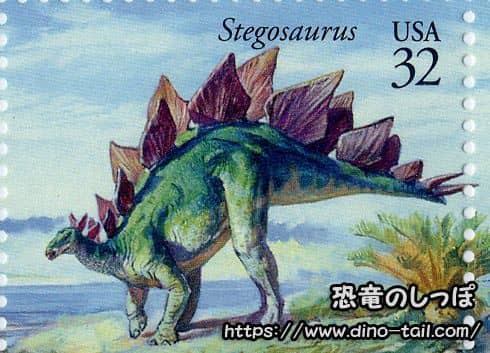
The back plates had a structure where a core of bone was covered by skin rich in blood vessels. It is thought that their role was not singular but served multiple purposes. The most widely accepted theory today is that their primary role was for visual display—to identify mates, court partners, and intimidate rivals. To maintain this flashy appearance, they also secondarily served a thermoregulatory function (releasing heat). They were likely not very useful as defensive armor.
It is also known that the back plates continued to grow even after the body's growth stopped in adulthood.
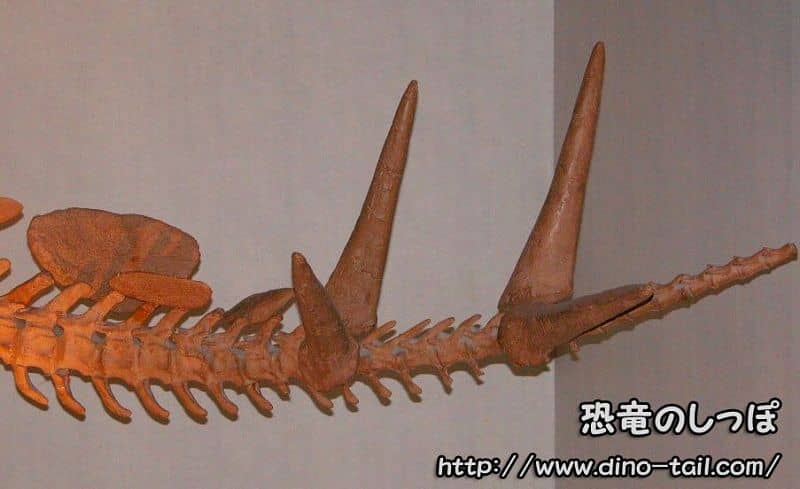
At the end of its tail were two pairs of four spikes, each up to 60 cm long. This was a weapon for defending against carnivorous dinosaurs. An Allosaurus hip fossil has been discovered with a hole that perfectly matches a Stegosaurus spike, telling the story of an Allosaurus that attacked a Stegosaurus and received a powerful counterattack.
It has been found that these spikes had a spongy and fragile structure in juveniles, but changed to a hard, dense structure as they grew into adults.
The Birth of the Thagomizer
The spikes on a Stegosaurus's tail are nicknamed the " Thagomizer ," a term that originated not from a scientific paper but from a famous comic strip, "The Far Side" by Gary Larson, in 1982. In the comic, a caveman explaining a cave drawing says, "This weapon is called a 'thagomizer,' after the late Thag Simmons." Paleontologists liked the unique name, and it is now a common term used even in scientific papers.
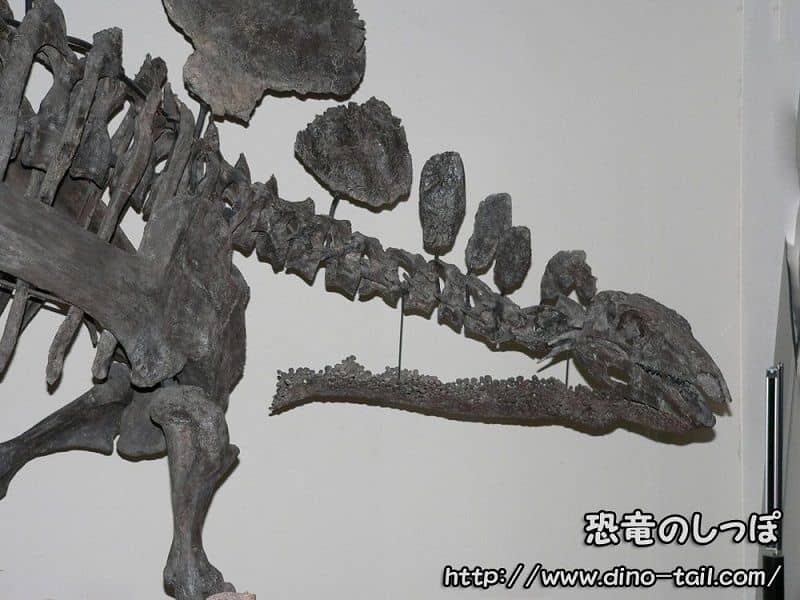
Small bones are lined up in the throat area of the neck. They likely served as armor to protect this vulnerable part.
The Biting Force of Stegosaurus
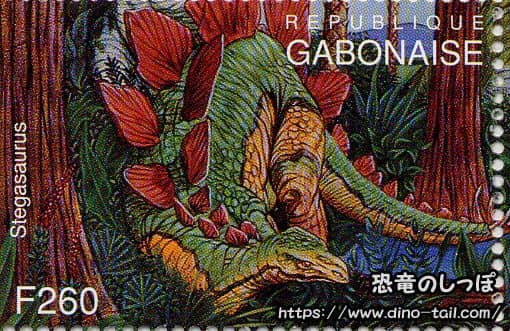
Although Stegosaurus was functional with its thermoregulating back plates and defensive tail spikes, it also had its weaknesses.
Its biting force was extremely weak.
In 2010, at the University of Alberta in Canada, a computer analysis of the biting force of Stegosaurus was conducted. It was found that the biting force was about 140N (Newtons) near the front teeth and 275N at the back teeth. A human's biting force is 750N, and a wolf's is 1400N. This means its biting force was only about one-third that of a human.
The main diet of Stegosaurus seems to have been low-growing (soft) ferns. If Stegosaurus were alive today, it would not have been able to eat the hard grasses found in grasslands.
Are Differences in Plate Size a Sign of Sexual Dimorphism?
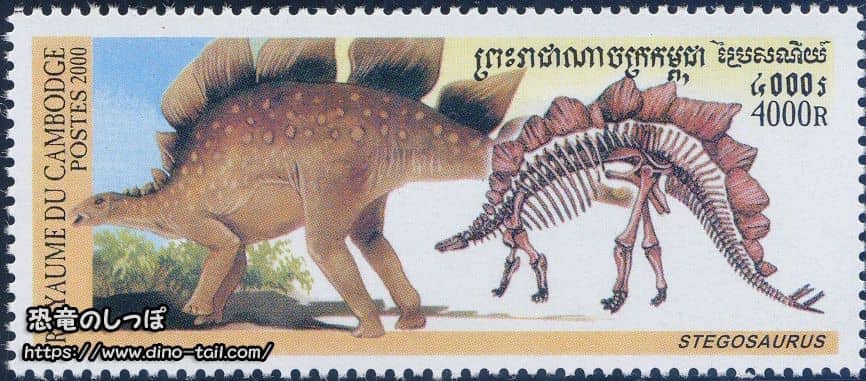
In 2015, a paper was published that touched on the relationship between the size of Stegosaurus back plates and sexual differences between males and females.
Five Stegosaurus specimens discovered at the same location in Montana, USA, were studied. The back plates of the five individuals were clearly classified as "wide" and "narrow." The area of the wide plates was 45% larger than that of the narrow ones. Although it is not known which were male and which were female, it was suggested that the difference in plate width could be due to sexual dimorphism.
The "Second Brain" Theory
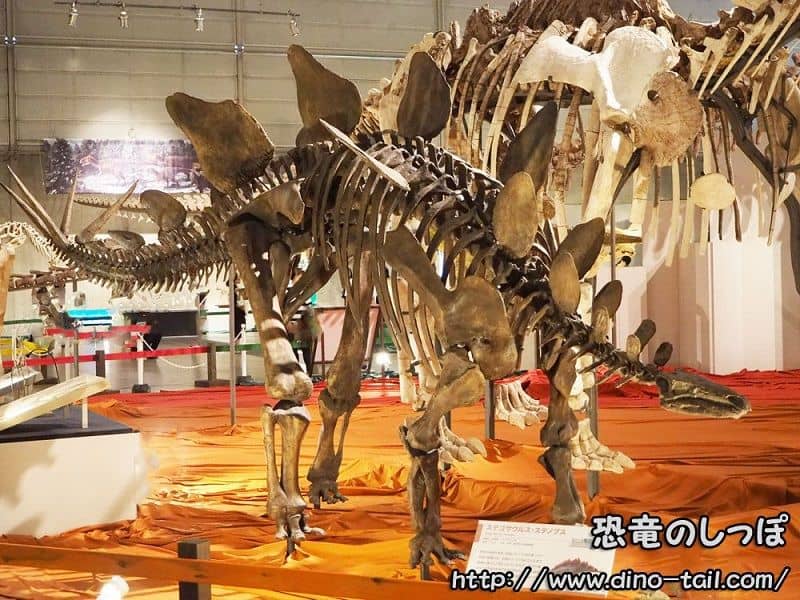
Stegosaurus has a large cavity in its back where the spinal cord passes through.
For a time, there was a theory that it had a "second brain" in that area.
This was because the brain in its head was so small (about the size of a walnut) that it was thought, "To control such a large body, there must be another brain somewhere else."
Today, the "second brain" theory has been refuted, and it is believed that the large cavity in the back was a space that housed a glycogen body for supplying nutrients to the nerves.
The Truth Revealed by the Miraculous Specimen "Sophie"
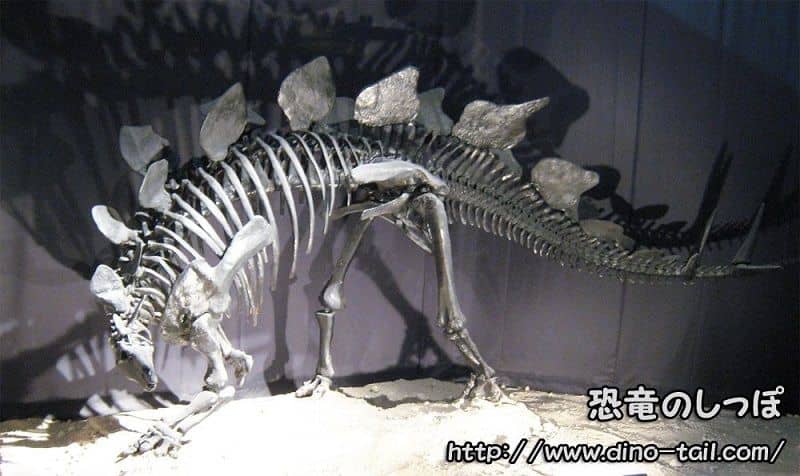
For many years, the overall picture of Stegosaurus was pieced together from fragmentary fossils. However, in 2014, the Natural History Museum in London amazed the world by unveiling the most complete Stegosaurus specimen ever found, with about 85% of its bones intact . This specimen is known by the nickname " Sophie ."
Detailed research on "Sophie" has clarified many previously mysterious points.
- Posture: While its neck could move flexibly, its head was always close to the ground, confirming that it was a "low-level browser" that ate low-growing plants.
- Weight and Gait: Its living weight was accurately calculated, and its walking speed was suggested to be very slow, about the speed of a human's brisk walk (about 6 km/h).
- Sexual Dimorphism: "Sophie's" plates are the tall, narrow type, and this has become an important baseline for future research into which features belong to males and which to females.
"Sophie" is truly a "benchmark individual" for elucidating the biology of Stegosaurus, and research is still ongoing.
First Publication and Changes in Reconstruction
The name Stegosaurus was first published in a paper in 1877. Paleontologist Othniel Charles Marsh published the paper "A new order of extinct Reptilia (Stegosauria) from the Jurassic of the Rocky Mountains" in the December 1877 issue of the American Journal of Science (Series 3 Vol. 14). In this paper, "Stegosaurus armatus" was described based on fragmentary fossils excavated from the northern part of the Morrison Formation in Colorado, USA.
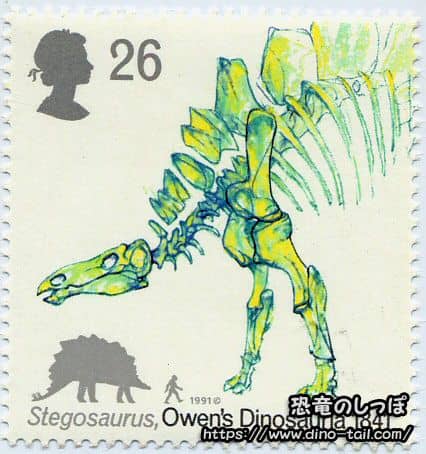
Stegosaurus was initially thought to be an aquatic, turtle-like reptile. Its back plates were also not depicted standing up as they are in modern reconstructions, but were treated as if they covered the back lying flat, like a turtle's shell or roof tiles. The genus name Stegosaurus comes from the Greek for "roofed lizard," derived from this "roof."
With the later discovery of better-preserved plate fossils, by 1891, Stegosaurus was being depicted with its plates standing in a row, as we see today.
The first described Stegosaurus was "Stegosaurus armatus," but the remaining specimens were fragmentary and unsuitable as a comparative standard specimen for identifying the species. Therefore, in 2013, the International Commission on Zoological Nomenclature replaced "Stegosaurus armatus" as the type species of Stegosaurus with the better-preserved "Stegosaurus stenops" (specimen number USNM 4934, described in 1887).
Gachapin and Stegosaurus Connection
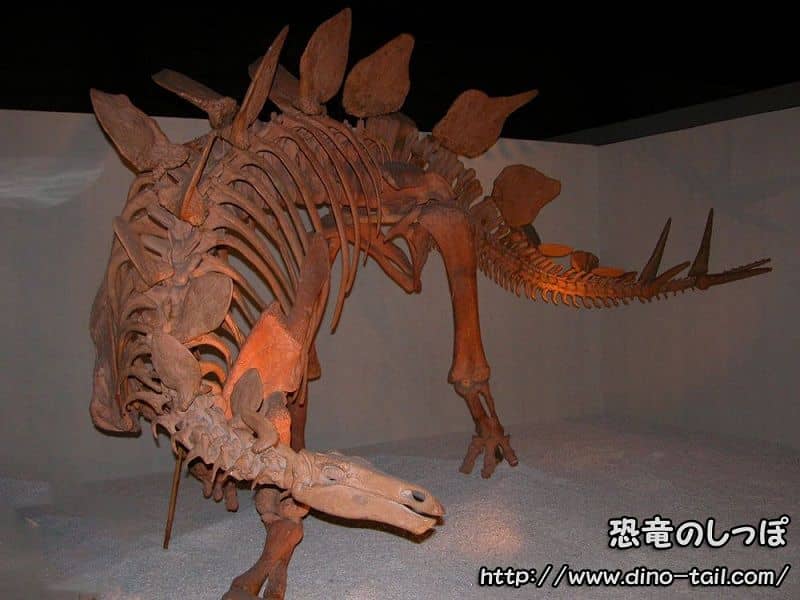
The fins on the back of the Japanese hero "Godzilla" are modeled after the plates of Stegosaurus.
Also, in 2012, with the cooperation of the Fukui Prefectural Dinosaur Museum, it was estimated that the ancestor of "Gachapin," a character from the Ponkikki series, belongs to the group Ornithischia - Thyreophora - Stegosauria.
